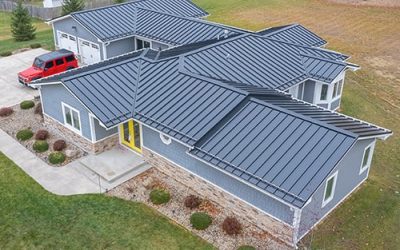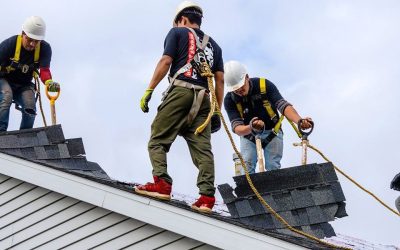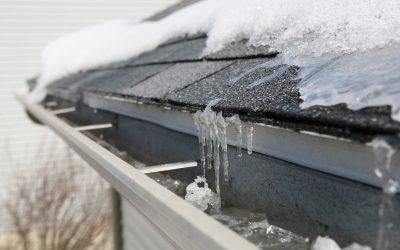Can Exterior Remodels Help Indianapolis Homeowners Lower Insurance Costs?
For homeowners in Indianapolis, exterior remodeling has always been about protecting what matters most. But for those looking closely at their homeowners’ insurance, these improvements may also offer a practical path to lower premiums and better long-term coverage.
At Kingdom Roofing Systems, we help Indiana families take a strategic approach—one that strengthens their home’s resilience while aligning with what many insurance providers look for in safer, code-compliant properties.
Below, we’ll explore how specific exterior upgrades can reduce risk, improve eligibility for discounts, and support more affordable insurance protection.
Key Takeaways
-
Exterior remodeling offers Indiana homeowners a way to reduce insurance costs through safer materials and better home protection.
-
Common upgrades like roofing, siding, and gutters help lower risk and improve how insurance providers assess your property.
-
Strong documentation and code-compliant improvements support smoother reassessments and may qualify you for more insurance coverage.
-
Extra steps like reviewing policies and adding business coverage ensure your home stays protected during and after remodeling.
How Exterior Remodeling Might Help You Save on Home Insurance
Smart exterior remodeling can do more than protect your home. It may also help lower your insurance costs. Here’s how it can support stronger protection and more affordable premiums:
Replacing Outdated Roofing to Meet Current Building Codes
Many homes in Indianapolis still have roofing systems that predate current building codes, leaving them vulnerable to weather damage and higher homeowners’ insurance rates. Updating it with impact-resistant materials provides not just structural protection but also home improvement insurance benefits.
Insurers often reward these significant improvements with lower home insurance premiums, especially when backed by certified inspections.
If your home sustains extensive fire damage, having newer roofing in place can also lead to better dwelling coverage in a roof replacement scenario.
Upgrading to Fiber Cement Siding for Fire and Impact Resistance
James Hardie siding is one of the most exciting home improvement materials for Indiana homeowners because of its fire resistance and durability.
Making this home renovation upgrade may increase your home’s value, reduce the potential for property damage, and make it easier to find home insurance coverage that offers sufficient coverage for your needs.
For would-be buyers, it also adds curb appeal and peace of mind, both of which can positively influence your homeowners’ policy options.
Installing Seamless Gutters to Prevent Foundation Damage
Properly installed seamless gutters help preserve your home’s floor plan and prevent costly foundation repairs tied to water intrusion. Water damage not only raises the cost of future homeowners’ insurance premiums but may also reduce the value of your home.
With fewer drainage issues, you can benefit from insurance discount opportunities and avoid exhausting your existing coverage limits.
In Marion County, where freeze-thaw cycles are common, insurance providers often factor gutter systems into their insurance reassessment process after remodels.
Adding Security Systems with Automatic Alerts
Adding security systems that integrate with your phone and automatically alert the police can significantly reduce your liability risk.
Many insurers in the insurance industry recognize homes with local alarm systems, cameras, and monitored sprinkler home security discounts as lower risk. These improvements can reduce your homeowners’ insurance premium while offering the same protection as higher-cost properties.
Whether you’re working with your insurance company or comparing options from more insurance carriers, enhanced security lowers your risk profile.
Increasing Square Footage with Code-Compliant Additions
Adding more livable square footage for an expanding family boosts your home’s market value, but it also requires updating your existing homeowners’ policy.
Ensuring the addition is built to code and professionally inspected opens the door for home improvement projects to result in better insurance features.
It’s common to see more coverage added through a policy upgrade, especially when your remodel includes new wiring, plumbing, or ventilation systems—all tied to improved financial protection in a disastrous event.
How to Remodel the Exterior Strategically to Lower Your Home Insurance
Remodeling your home’s exterior offers an opportunity to improve how your home is viewed by your insurance provider. When done right, these upgrades can support lasting coverage.
Here’s how to remodel with both safety and savings in mind:
Prioritize High-Risk System Updates First
Updating your roof, siding, or gutters doesn’t just improve aesthetics. It reduces your liability and appeals to your insurance carrier.
Many clients ask, “Does home remodeling lower insurance costs?”
In our experience, yes, when focused on key risk areas like storm damage and drainage. This is especially true in areas where weather damage is common and claims history can impact your home insurance status.
Choose Products Recognized by the Insurance Industry
We work with materials proven to reduce claims, including those supported by leading carriers in the insurance industry.
When choosing remodeling materials, opt for those that support better insurance coverage or qualify for discounts on contractors’ insurance documentation. These decisions streamline claims and make it easier to provide coverage that reflects your home’s true resilience.
Document Every Renovation for Post-Project Reassessment
Detailed records, including invoices and before-and-after photos, support post-renovation valuation and guide your insurance reassessment. This is especially important if you’re trying to compare home insurance quotes or evaluate how much coverage you need.
Every change to the square footage or safety profile can affect your existing policy, including whether you need vacant home insurance during construction.
Add Mitigation Measures That Reduce Disaster Losses
Including special loss mitigation measures like fire-rated attic insulation, soffit venting, or Class 4 impact-resistant asphalt shingles lowers your exposure to business risk and property damage.
These updates may also influence how your homeowners’ insurance handles claims following storms or fire. They’re especially relevant in areas near wooded zones where risk exposure is higher.
Ask About Additional Policy Types if You Run a Home-Based Business
Operating a home business, working remotely, or storing business-related assets can complicate your home insurance coverage.
In such cases, your insurance agent may recommend a separate policy designed specifically for in-home business insurance or a separate home business policy.
This ensures business property included in your home’s structure is accounted for, minimizing gaps in personal property protection.
Coordinate with Your Contractor for Builders’ Risk Insurance
For large remodels, especially those involving roof tear-offs or full siding replacement, a builder’s risk insurance policy may be required. This temporary coverage protects your structure while it’s under construction, and it’s crucial when portions of your home are exposed.
At Kingdom Roofing Systems, we collaborate with your insurance provider to confirm that your liability coverage and dwelling coverage aren’t compromised during the upgrade.
Ask Your Agent to Compare Home Insurance Quotes After Renovations
After completing your project, review your existing policy with an agent and explore options through more insurance carriers. Ask how each option handles your current building codes, recent significant improvements like a new fiber cement siding, and any new insurance features you’ve added.
Even your central dispatch team for alarm monitoring can be a variable in final pricing, and your umbrella insurance policy may need adjustment depending on your updated risk profile.
Ready to reduce insurance costs while upgrading your home?
Contact us at (317) 674-4900 or (765) 573-5899 for a free roof inspection and tailored remodel plan that supports both safety and savings.
Frequently Asked Questions
Does home remodeling lower insurance if the project only involves updating windows or doors?
Cosmetic updates like windows or doors rarely lower insurance costs. Insurers value functional improvements, such as updating wiring, replacing pipes, or installing more modern plumbing hardware that reduces potential water or fire risks.
Will my insurance company raise dwelling coverage automatically after a significant home renovation?
Your insurance company will not increase dwelling coverage without documentation. Request a reassessment to avoid exceeding your existing limit and stay fully protected.
Does homeowners’ insurance provide coverage for issues caused by outdated wiring or plumbing systems during construction?
Homeowners’ insurance may exclude claims related to old wiring or plumbing systems. Upgrade to standards that mean insurance companies consider safe before starting work.
Can homeowners’ insurance discounts apply if my new security system automatically alerts police during emergencies?
Yes. A system that automatically alerts police lowers risk and may reduce premiums if a disastrous event occurs during your coverage period.










